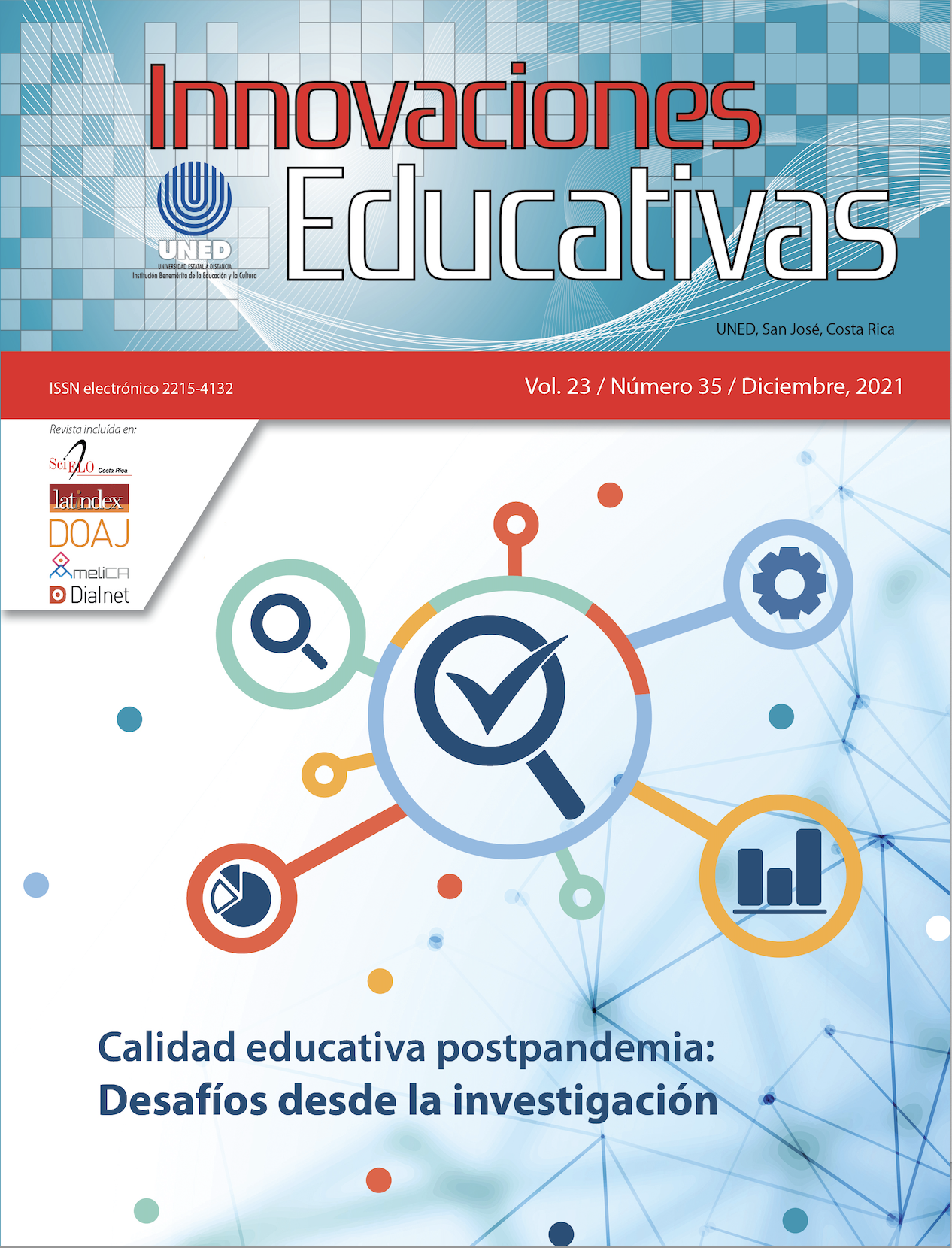Comparative analysis of the results of the EGRA tests applied in a network of educational centers in Fe y Alegría, Nicaragua (2016-2018)
DOI:
https://doi.org/10.22458/ie.v23i35.3476Keywords:
EGRA tests, reading comprehension, student evaluation, teacher competencies, pedagogical practiceAbstract
This study became a pedagogical reflection based on the results of the EGRA tests applied to first, second and third grade students, in the period from 2016 to 2018. The study population consisted of 5,820 standardized tests applied in 18 educational centers served by Fe y Alegría Nicaragua. For the purposes of the analysis, a sample of 4,624 tests was obtained, with a confident 99.7% and a 1% margin of error. A mixed study was carried out, with a minimum inter-method integration level, by means of the Complemented Integral Design (DICO-its acronym in Spanish). The study made it possible to carry out a comparative analysis between the results obtained in the tests applied to first grade students in the three years of the study (2016-2018) and, in the same way, an evolutionary analysis from first to third grade in the same period. On the one hand, it provides guidelines to determine measurement indicators to continue evaluating the skills of fluency and reading comprehension in the student body, but it also provides inputs to offer monitoring of teaching performance. It was established as a baseline for updating the proposal to improve reading fluency and comprehension in students from first to third grade of the educational centers belonging to the Fe y Alegría network.
References
Ariza, C., & Vargas, L. (2017). La indagación, pretexto para fortalecer la comprensión lectora. Revista
Ciencias Humanas, 67-77.
Arráez, M., Calles, j., & Moreno, L. (2006). La hermenéutica: una actividad interpretativa. Red de Revistas
Científicas de América Latina, el Caribe, España y Portugal, 7(2):171-181.
Castro, V. (Marzo, 2012). Si no mejora la calidad en la educación pública está en juego el futuro del
pais. Envío.
Castro, C., Cifuentes, N., Gómez, T., & Rincón, N. (2017). Implicación de la formación de la competencia
lectora: una visión desde el aula. En J. Gómez, A. Aguilar, S. Jaimes, C. Ramírez, J. Salazar, J.
Contreras, & J. Espinoza, Prácticas pedagógicas (págs. 1039-1065). Maracaibo: Astro Dasa S.A.
Castillo, M. (2015). Este estudio nos alerta: en la educación nos estamos quedando atrás. Recuperado
de http://www.envio.org.ni/articulo/4963
Fundación Zamora Teran. (2013). Promoviendo el desarrollo de la lectoescritura en Nicaragua.
Managua.
Gamboa, M. C., García, Y., & Beltrán, M. (2013). Estrategias pedagógicas y didácticas para el desarrollo
de las inteligencias múltiples y el aprendizaje autónomo. UNAD, 12(1): 101-128.
Jarquin, L. (21 de Enero de 2014). Y usted,¿cuántas palabras lee por minuto? El Nuevo Diario. Tomado
de: https://www.elnuevodiario.com.ni/especiales/308373-usted-cuantas-palabras-lee-minuto/.
Jímenez, J. (2009). Manual para la evaluación inicial de la lectura en niños de educación primaria. Islas
canarias: RTI International.
Marin, F., Niebles, M., Sarmiento, M., & Valbuena, S. (2017). Mediación de las tecnologías de la
información en la comprensión lectora para la resolución de problemas aritméticos de enunciado
verbal. Espacios.
Molina, D. (2014). El método Fonico Analítico-sintético orientado a la enseanza del código alfabético de
los niños del segundo año de educación general básica de la escuela “Ambato de los Angeles” de
la Parroquia Izamba del Cantón Ambato Provincia de Tungurahua. Ambata, Ecuador: Univerisdad
Técnica de Ambata.
Narvarte, M. (2008). Lectoescritura: aprendizaje integral. España: Talleres gráficos Peñalara S.A.
Universia. 28 de diciembre de 2020. https://www.universia.net/cl/actualidad/orientacion-academica/
cual-es-el-significado-de-ser-autodidacta.html (último acceso: 30 de julio de 2021).
Villalobos, L. R. (2017). Enfoques y diseños de investigación social. San José: Universidad Estatal a
Distancia.

